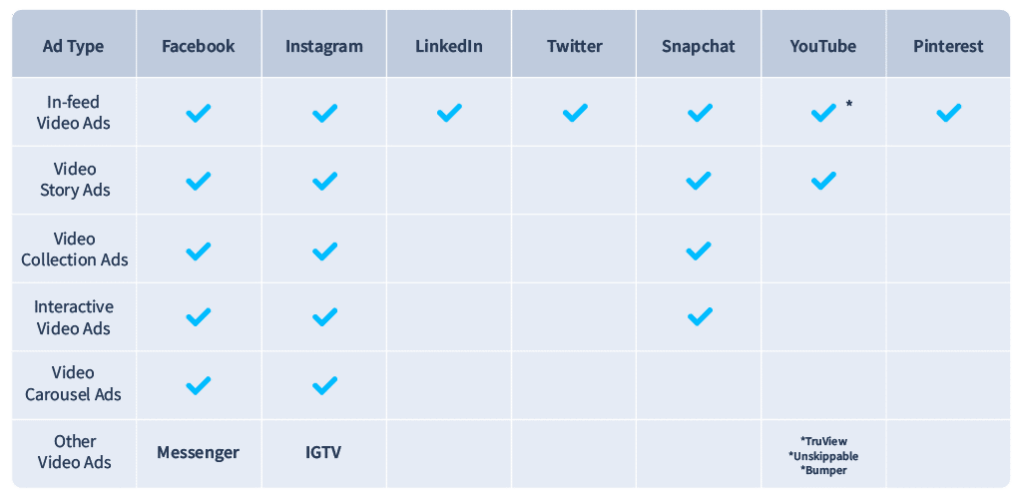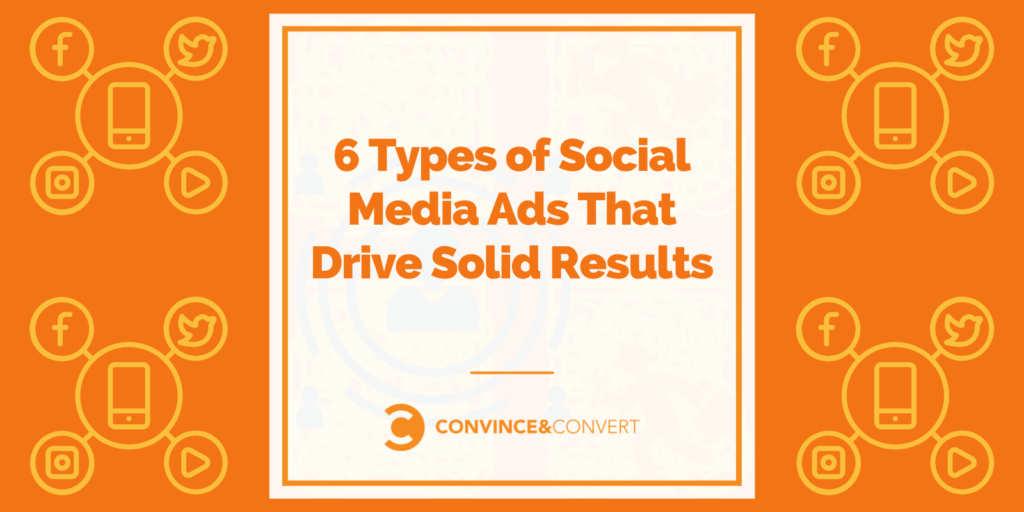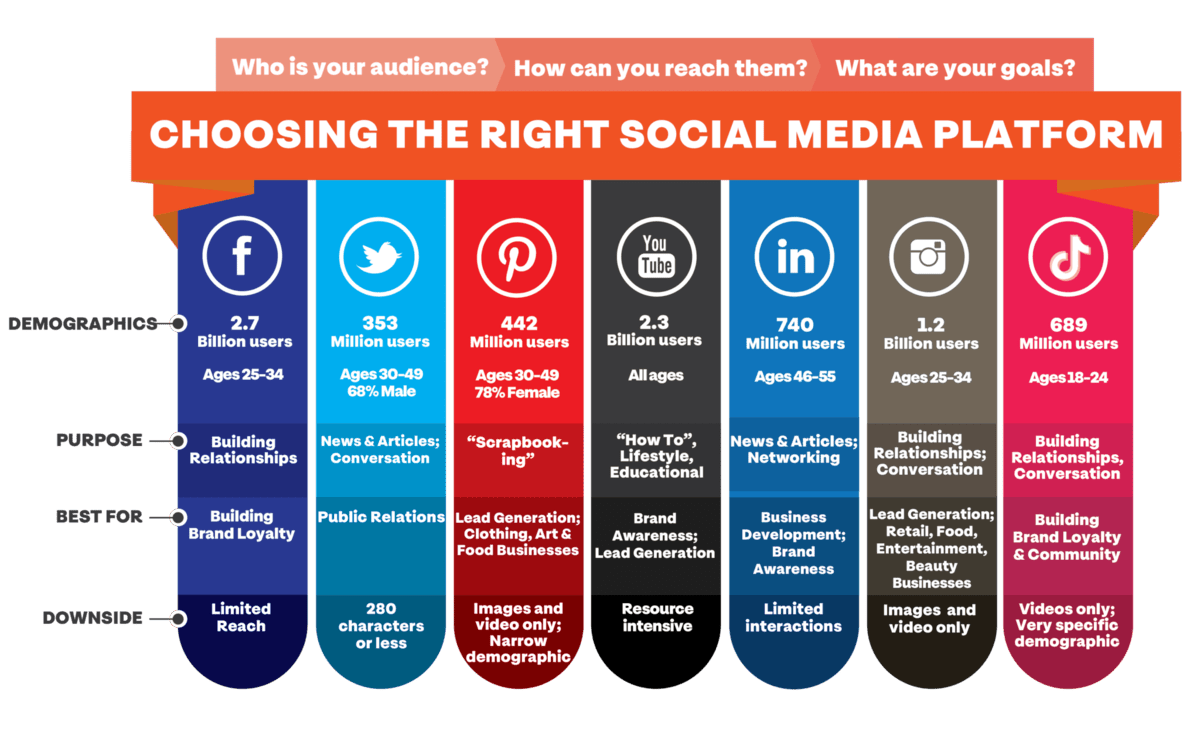### Types of Ads on Social Media Social media ads include image ads, video ads, carousel ads, and sponsored posts. Each type serves different marketing objectives.
Social media advertising is essential for modern digital marketing. Businesses leverage various ad formats to engage their target audience effectively. Image ads are straightforward, using compelling visuals to capture attention. Video ads provide dynamic storytelling opportunities. Carousel ads allow multiple images or videos in a single ad, ideal for showcasing products.
Sponsored posts blend seamlessly into users’ feeds, promoting content in a more organic way. Each type of ad offers unique benefits, helping brands achieve visibility, engagement, and conversions. Understanding these formats can significantly enhance a brand’s social media strategy, making it more robust and effective.

Credit: digivizer.com
Introduction To Social Media Advertising
Social media advertising has transformed how brands connect with audiences. These ads appear on platforms like Facebook, Instagram, Twitter, and LinkedIn.
The Rise Of Social Media
Social media has grown rapidly over the past decade. Everyone uses it daily to share, connect, and explore. This growth has created new opportunities for brands. They can reach audiences more effectively than ever before.
According to a Statista report, over 4.5 billion people use social media. This number continues to rise each year. Brands now have a huge pool of potential customers. These platforms provide tools to target specific demographics. This makes advertising more precise and efficient.
| Year | Social Media Users (in billions) |
|---|---|
| 2015 | 2.07 |
| 2018 | 3.10 |
| 2021 | 4.20 |
| 2023 | 4.50 |
Impact On Brand Visibility
Social media ads boost brand visibility significantly. They can reach millions in seconds. Brands can showcase their products to a wide audience. This increases the chance of gaining new customers.
There are different types of ads, each designed for specific goals:
- Image Ads: Simple yet effective for visual appeal.
- Video Ads: Engage users with dynamic content.
- Carousel Ads: Showcase multiple products in one ad.
- Story Ads: Short, immersive ads on platforms like Instagram.
By using these ads, brands can increase their reach. They can also improve engagement and drive sales. Effective social media advertising strategies can lead to significant business growth.
Essentials Of Social Media Ad Campaigns
Creating effective social media ads requires understanding key elements. These essentials ensure your campaigns are successful and reach the right audience.
Setting Campaign Goals
Define your campaign goals clearly. Goals could include increasing brand awareness, generating leads, or driving sales. Use the SMART criteria: Specific, Measurable, Achievable, Relevant, Time-bound.
- Specific: Clearly state what you want to achieve.
- Measurable: Ensure you can track your progress.
- Achievable: Set realistic and attainable goals.
- Relevant: Goals should align with your business objectives.
- Time-bound: Set a deadline for achieving your goals.
Target Audience Identification
Identifying your target audience is crucial. Understand who they are and what they need. Use demographics, interests, and behaviors to segment your audience.
| Criteria | Details |
|---|---|
| Demographics | Age, gender, location, income, education |
| Interests | Hobbies, favorite brands, activities |
| Behaviors | Purchase history, online activity, engagement patterns |
Utilize tools like Facebook Audience Insights or Google Analytics. These tools help you gather valuable data about your audience.
Paid Vs Organic Reach
Understanding paid vs organic reach is crucial for social media success. Both play unique roles in your marketing strategy. Let’s dive into their specifics and see how to balance them effectively.
Pros And Cons
| Type | Pros | Cons |
|---|---|---|
| Paid Reach |
|
|
| Organic Reach |
|
|
Balancing Both For Success
A successful strategy uses both paid and organic reach. Here’s how:
- Analyze your audience: Know who you are targeting.
- Create engaging content: High-quality posts attract organic reach.
- Allocate budget wisely: Invest in paid ads for quick results.
- Monitor performance: Use analytics to refine your approach.
- Engage with followers: Interaction boosts organic reach.
Balancing both types enhances your online presence. It helps you reach a wider audience effectively.

Credit: www.convinceandconvert.com
Photo Ads: Capturing Attention
Photo ads are a powerful tool in social media marketing. They capture attention quickly and deliver messages effectively. Visual content is highly engaging and memorable. Let’s explore the elements that make a photo ad strong and the platforms best suited for them.
Elements Of A Strong Photo Ad
A strong photo ad has several key elements that make it stand out. Here are some important aspects:
| Element | Description |
|---|---|
| High-Quality Image | Use clear and sharp images. Avoid blurry or pixelated photos. |
| Compelling Visuals | Choose images that evoke emotions. Bright colors and interesting subjects work well. |
| Clear Branding | Incorporate your logo and brand colors. Ensure your brand is recognizable. |
| Concise Text | Keep text short and to the point. Use bold fonts for emphasis. |
| Call to Action | Include a clear call to action. Tell viewers what to do next. |
Platforms Best Suited For Photo Ads
Different social media platforms are better suited for photo ads. Here are the top platforms:
- Instagram: Instagram is highly visual. Photo ads perform very well here.
- Facebook: Facebook supports various ad formats. Photo ads can reach a wide audience.
- Pinterest: Pinterest users love visuals. Photo ads can drive high engagement.
- LinkedIn: LinkedIn is great for B2B marketing. Professional photo ads work well.
Video Ads: Engaging The Audience
Video ads have become a powerful tool on social media. They capture attention quickly and keep users engaged. With their dynamic nature, they can tell a story, showcase a product, or create a memorable experience. Let’s explore how to create compelling video content and optimize it for different platforms.
Creating Compelling Video Content
Creating compelling video content is crucial for engaging the audience. Here are some tips to make your video ads stand out:
- Start with a strong hook: Grab attention within the first few seconds.
- Keep it short and sweet: Aim for videos under 60 seconds.
- Use high-quality visuals: Ensure your video is clear and crisp.
- Incorporate captions: Many users watch videos without sound.
- Tell a story: Create a narrative that resonates with your audience.
- Include a call to action: Direct viewers on what to do next.
Optimizing For Different Platforms
Optimizing video ads for different platforms ensures maximum reach and engagement. Each platform has unique requirements and best practices:
| Platform | Best Practices |
|---|---|
|
|
|
|
| YouTube |
|
|
Carousel Ads: Storytelling Through Sequences
Carousel ads are a dynamic way to tell stories on social media. These ads use multiple images or videos in a single ad unit. Users can swipe through these slides, engaging with each piece of content. This format allows brands to showcase different products, features, or aspects of a story.
Designing An Effective Carousel
Creating a compelling carousel ad requires careful planning and design. Start with a clear goal. Know what story you want to tell.
| Steps | Description |
|---|---|
| Define Objective | Identify the main message or product feature. |
| Choose Visuals | Select high-quality images or videos. |
| Order Slides | Arrange images in a logical sequence. |
| Add Captions | Write short, engaging text for each slide. |
Best Practices For Multi-image Ads
- Consistency: Use a consistent theme or style across all slides.
- Engaging Visuals: Choose images that grab attention.
- Storytelling: Each slide should contribute to the overall story.
- Call to Action: Include a clear call to action on the final slide.
Follow these steps to create carousel ads that captivate and convert. Keep the content relevant and engaging. Your audience will appreciate a well-told story.
Stories Ads: Ephemeral Engagement
Stories Ads: Ephemeral Engagement are short-lived ads that capture attention quickly. These ads appear in the stories feature of social media platforms. They are designed to be immersive and engaging, offering a unique way to connect with your audience. Their temporary nature creates urgency, making viewers act fast. Let’s explore how to create and leverage these ads effectively.
Crafting Ads For Stories
Creating an ad for stories requires a strategic approach. Here are some tips:
- Keep it short and sweet: Stories ads are brief. Focus on key messages.
- Use high-quality visuals: Attractive images or videos grab attention.
- Include clear calls-to-action (CTAs): Guide viewers on what to do next.
- Optimize for sound-off viewing: Many users watch stories without sound.
Leveraging The Fomo Effect
FOMO, or Fear of Missing Out, drives engagement in stories ads. Here’s how to use it:
- Create time-sensitive offers: Limited-time discounts or deals.
- Showcase exclusive content: Share behind-the-scenes glimpses.
- Highlight urgency: Use countdowns or timers.
- Encourage immediate action: Use phrases like “Swipe up now” or “Tap to shop”.
Stories ads can transform your social media strategy. Craft them carefully and leverage FOMO to maximize engagement.
Influencer Collaborations: Leveraging Credibility
Influencer collaborations are a powerful way to build trust. Social media influencers have a loyal audience. They provide brands with credibility. Collaborating with influencers can boost your brand’s visibility. It also enhances customer engagement.
Choosing The Right Influencer
Picking the right influencer is crucial. Not every influencer suits your brand. Consider these factors:
- Audience Demographics: Ensure their followers match your target audience.
- Engagement Rate: High engagement means their followers interact with their content.
- Content Quality: Their posts should be high-quality and align with your brand.
- Reputation: Check their past collaborations and public image.
Using these criteria helps in finding the best match. This ensures a successful collaboration.
Measuring Campaign Impact
Measuring the impact of an influencer campaign is vital. You need to track the right metrics. Here are some key metrics to consider:
| Metric | Description |
|---|---|
| Engagement Rate | Likes, comments, and shares on the influencer’s posts. |
| Reach | Number of unique users who saw the content. |
| Conversions | Number of sales or leads generated from the campaign. |
| Referral Traffic | Visitors to your website from the influencer’s content. |
Track these metrics to understand your campaign’s success. Use tools like Google Analytics and social media insights. This data helps in refining future collaborations.
Interactive Ads: Encouraging Participation
Interactive ads are a game-changer in social media marketing. They encourage users to participate, making the experience memorable. These ads drive engagement and foster a deeper connection with the brand.
Types Of Interactive Ads
Interactive ads come in various forms. Each type offers unique ways to engage users.
- Polls and Surveys: These ask users for their opinions. Simple questions can gather valuable data.
- Quizzes: Fun and engaging, quizzes keep users on the page longer. They also provide insights into user preferences.
- Contests: These encourage users to participate for a chance to win. Contests can go viral quickly.
- Interactive Videos: Users can click, choose, and explore within the video. This keeps their attention and increases engagement.
- Augmented Reality (AR) Ads: These blend the digital and physical worlds. Users can interact with products in their environment.
Increasing User Engagement
Interactive ads are designed to increase user engagement. Here’s how:
- Personalization: Personalized ads make users feel special. They are more likely to engage with content that speaks to them.
- Entertainment: Fun and entertaining ads keep users coming back. They share these ads with friends, increasing reach.
- Rewards: Offering rewards for participation boosts engagement. Users love getting something in return.
- Ease of Use: Easy-to-use ads lower barriers to engagement. Users are more likely to interact if the process is simple.
- Visual Appeal: Visually appealing ads attract attention. High-quality images and videos make a strong impression.
Interactive ads are a powerful tool in social media marketing. They encourage participation, drive engagement, and create memorable experiences.
Retargeting Ads: Converting Interested Audiences
Retargeting ads are a powerful tool in digital marketing. They help brands re-engage visitors who have shown interest. These ads remind potential customers of their previous interactions.
Understanding Retargeting
Retargeting works by tracking website visitors. It uses cookies to follow them as they browse other sites. When these visitors see your ads again, they are more likely to convert. This is because they have already shown interest in your products.
The main goal of retargeting is to increase conversions. It nudges interested users to take action. This action could be making a purchase or signing up for a newsletter.
Tools And Techniques For Effective Retargeting
Several tools and techniques make retargeting effective. These tools help create personalized ads that resonate with users.
| Tool | Description |
|---|---|
| Google Ads | Tracks visitors and shows relevant ads on Google’s network. |
| Facebook Pixel | Tracks user activity on your site and retargets on Facebook. |
| AdRoll | Offers cross-platform retargeting on various ad networks. |
Here are some effective retargeting techniques:
- Segment your audience: Divide users based on their behavior.
- Create personalized ads: Tailor ads to match user interests.
- Set frequency caps: Limit how often ads are shown to avoid annoyance.
- Use dynamic retargeting: Show ads featuring products users viewed.
- Track performance: Analyze results and tweak campaigns for better outcomes.
Effective retargeting can turn interested visitors into loyal customers. It ensures your brand stays top of mind.
Analyzing Ad Performance
Understanding how your ads perform is essential. This ensures you spend your budget wisely. You need to track key metrics and adjust your strategies based on data.
Key Metrics To Track
There are several key metrics to monitor. These metrics help determine the success of your ads. Here are some important ones:
- Click-Through Rate (CTR): Measures how many people click your ad.
- Conversion Rate: Shows the percentage of clicks that result in a desired action.
- Cost Per Click (CPC): Indicates how much you pay for each click.
- Return on Ad Spend (ROAS): Calculates the revenue generated from your ads.
- Engagement Rate: Tracks likes, shares, and comments on your ad.
Adjusting Strategies Based On Data
Once you have gathered data, you need to analyze it. This helps you adjust your strategies for better results. Here are some steps to follow:
- Identify trends: Look for patterns in your metrics.
- Test different elements: Try different headlines, images, and calls to action.
- Allocate budget wisely: Shift your budget to the best-performing ads.
- Monitor frequently: Keep an eye on your metrics regularly.
- Make data-driven decisions: Use your findings to refine your strategy.
By tracking these metrics and adjusting your strategies, you can optimize your ad performance. This ensures you get the most out of your social media advertising efforts.
Future Trends In Social Media Ads
The future of social media ads is exciting. New trends are emerging. These trends promise better engagement and effectiveness. Let’s dive into the future of social media ads.
Emerging Formats
New ad formats are constantly being developed. Here are some emerging formats that will shape the future:
- Interactive Ads: These ads engage users with quizzes and polls.
- Shoppable Posts: Users can buy products directly from the ad.
- Augmented Reality (AR) Ads: These ads let users try products virtually.
| Ad Format | Description |
|---|---|
| Interactive Ads | Engage users with interactive elements like quizzes. |
| Shoppable Posts | Allow direct purchases from the ad. |
| AR Ads | Enable virtual try-ons for products. |
Predictions For Ad Technologies
Ad technologies are evolving rapidly. Here are some predictions:
- AI-Powered Ads: AI will create personalized ads for users.
- Voice Search Ads: Ads will appear in voice search results.
- Programmatic Advertising: Automated ad buying will become more common.
These technologies will make ads more relevant. They will also improve user experience. Brands must stay updated with these trends. This will help them stay ahead in the game.

Credit: www.sprinklr.com
Frequently Asked Questions
What Type Of Ads Are On Social Media?
Social media ads include image ads, video ads, carousel ads, slideshow ads, and sponsored posts. These ads target specific audiences.
What Are The 5 Types Of Facebook Ads?
The 5 types of Facebook ads are: 1. Image ads. 2. Video ads. 3. Carousel ads. 4. Slideshow ads. 5. Collection ads.
What Are The 4 Parts Of A Social Media Ad?
A social media ad has four parts: the headline, the visual, the ad copy, and the call to action.
What Are The 9 Types Of Advertising Media?
The 9 types of advertising media are: 1. Television 2. Radio 3. Print (newspapers, magazines) 4. Online (websites, social media) 5. Outdoor (billboards, transit) 6. Direct Mail 7. Mobile 8. Cinema 9. Influencer Marketing
Conclusion
Exploring different social media ads can boost your marketing efforts. Each type offers unique benefits and reaches diverse audiences. Tailor your strategy to fit your brand’s needs and goals. By understanding these ad formats, you can create more effective campaigns.
Stay ahead and maximize your social media potential.
